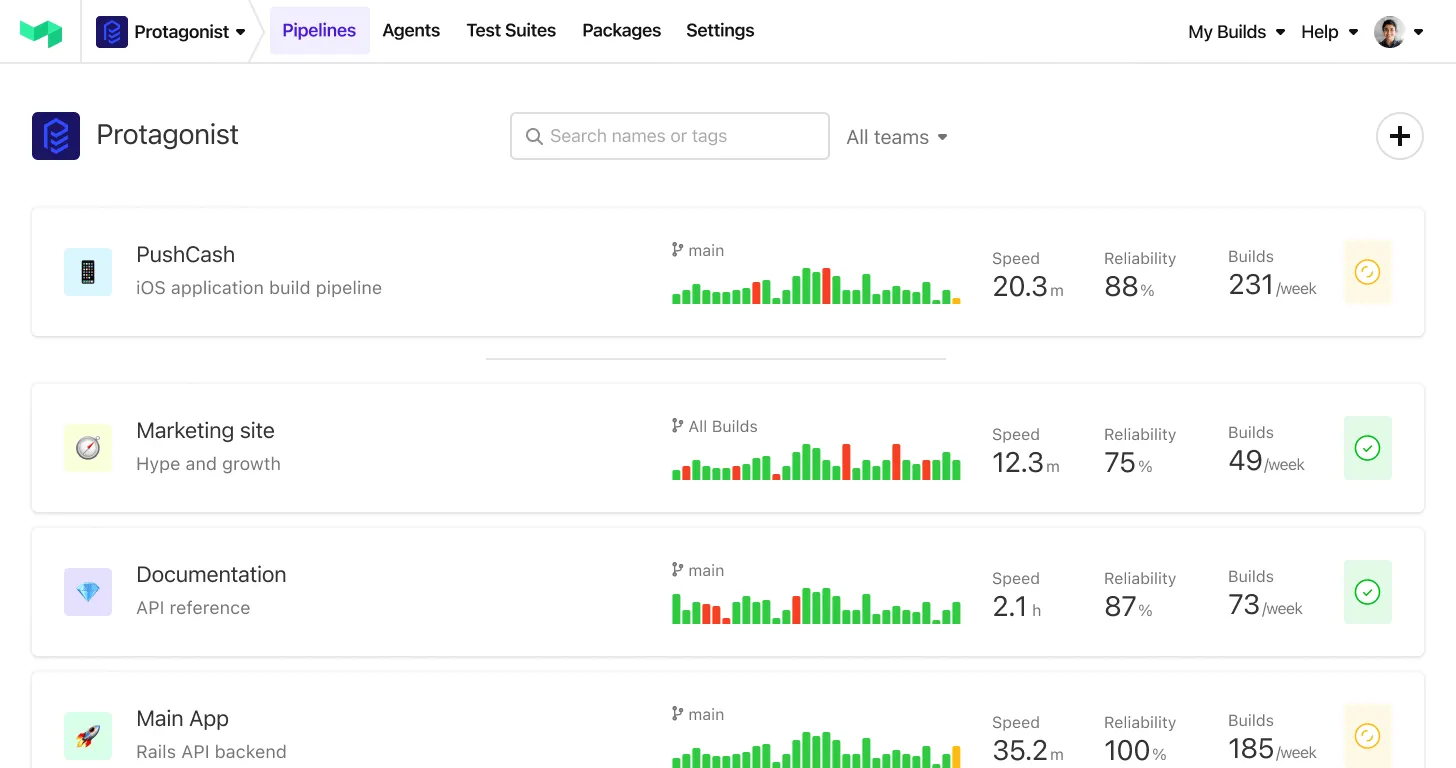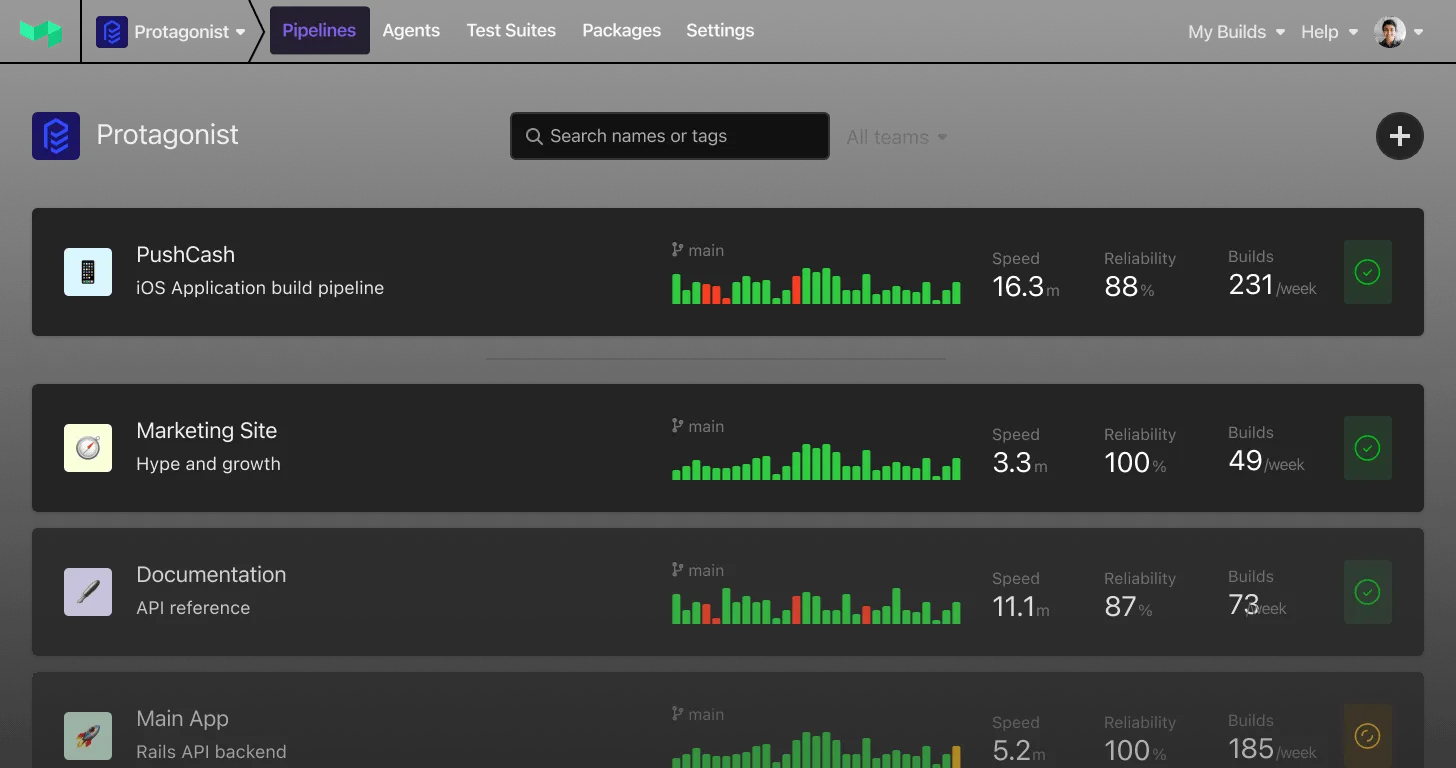Jenkins migration guide added to the docs
We’ve added a guide in the docs to help you migrate from Jenkins to Buildkite.
The new page:
- Provides a general approach for migration.
- Explains the key differences.
- Highlights the most important considerations.
We hope it makes the migration process more straightforward and transparent.
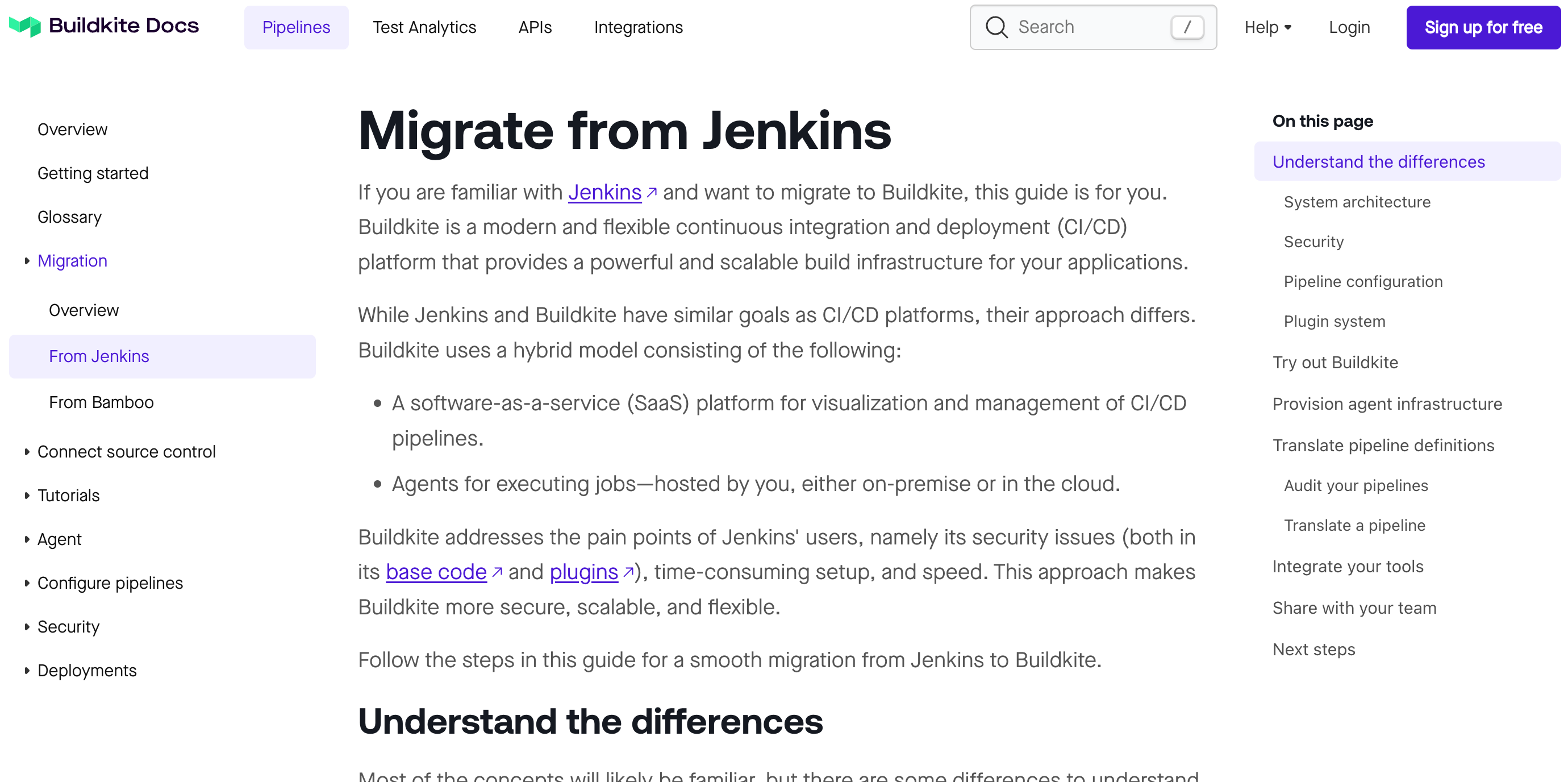
See Migrate from Jenkins to check it out. ✨
Michael
AWS Elastic CI Stack v5.19.0 release
The v5.19.0 version of the Elastic CI Stack is now avaliable. This includes a fix for an error encountered when creating a new stack from its cloudformation template due to an attempt to create an ACL for object ownership when they are now disabled by default.
For further details of the fix and what else is included in the release, see the Elastic CI Stack's release notes.
Narthana
Docs home page redesign
We've redesigned the documentation home page to make getting to the content you want easier.
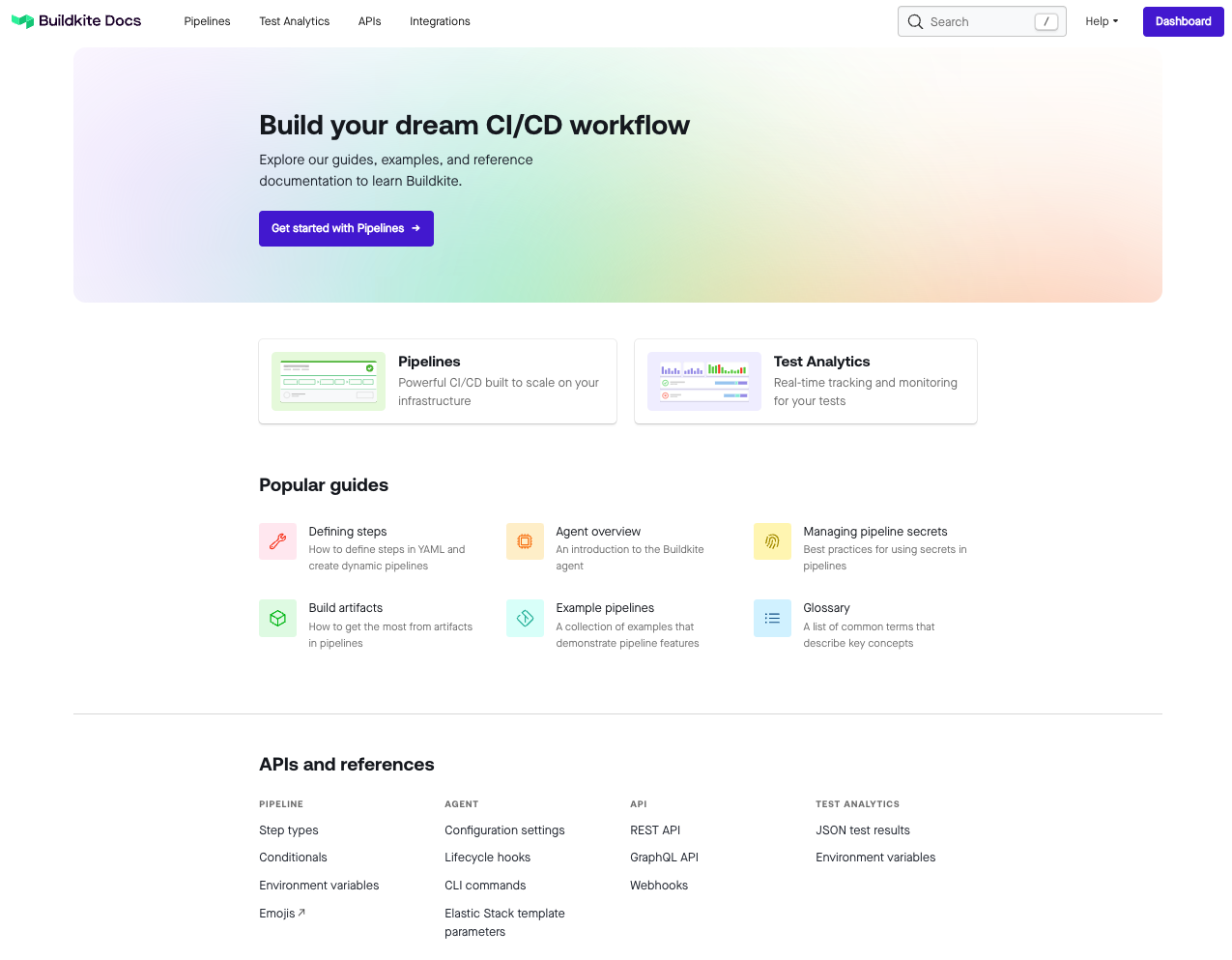
Notice:
- A clearer path to get started for new users.
- Quick access to popular content for everyone.
- Links to look up reference data for experienced users.
- A consistent global navigation to make jumping to the section you want easier.
See Buildkite docs to check it out! ✨
Michael
Elastic CI Stack for AWS docs restructure
We've restructured the documentation for the Elastic CI Stack for AWS to create clearer and more focused pages that are easier to navigate.
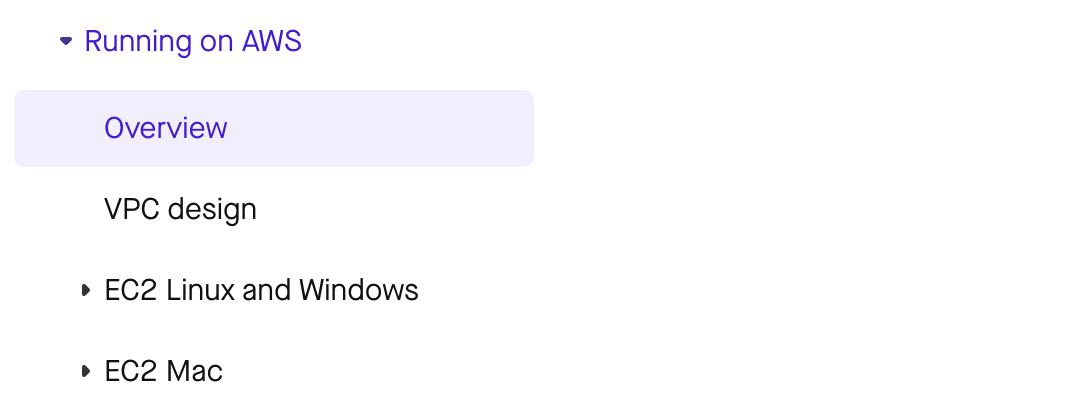
See the Overview to check out the changes. ✨
Michael
Now available: March 2023 release
We've just shipped new features that'll help uplevel your build and test workflows with Buildkite, including some key announcements:
Shaziya
Agent Stack for Kubernetes
We've released a new way to run your Buildkite jobs in Kubernetes natively. The Agent Stack for Kubernetes will allow your Kubernetes cluster to orchestrate your Buildkite Pipeline steps as Kubernetes jobs.

Narthana
Secure your organization with session IP address pinning
Prompt your users to re-authorize when their origin changes.
With session IP address pinning enabled, authorized sessions can only come from the IP address that created the session. If another IP address attempts to access the organization, the session will be immediately revoked. By pairing IP pinning with SSO session durations, we're taking a proactive approach to combating stolen session cookies.
We're committed to keeping our customers' data secure and are constantly exploring new ways to enhance our security measures.
Juanito
Clusters
Clusters allow you to organize agents into groups. These groups, or clusters, will enable the management of pipelines and queues within that cluster.
Clusters can be turned on by an admin by accessing pipeline settings in the organization settings tab. Note that once clusters is enabled, you will be unable to disable it.
Oz
OIDC support is now available
You can now request an OpenID Connect (OIDC) token from the Buildkite Agent 🔑
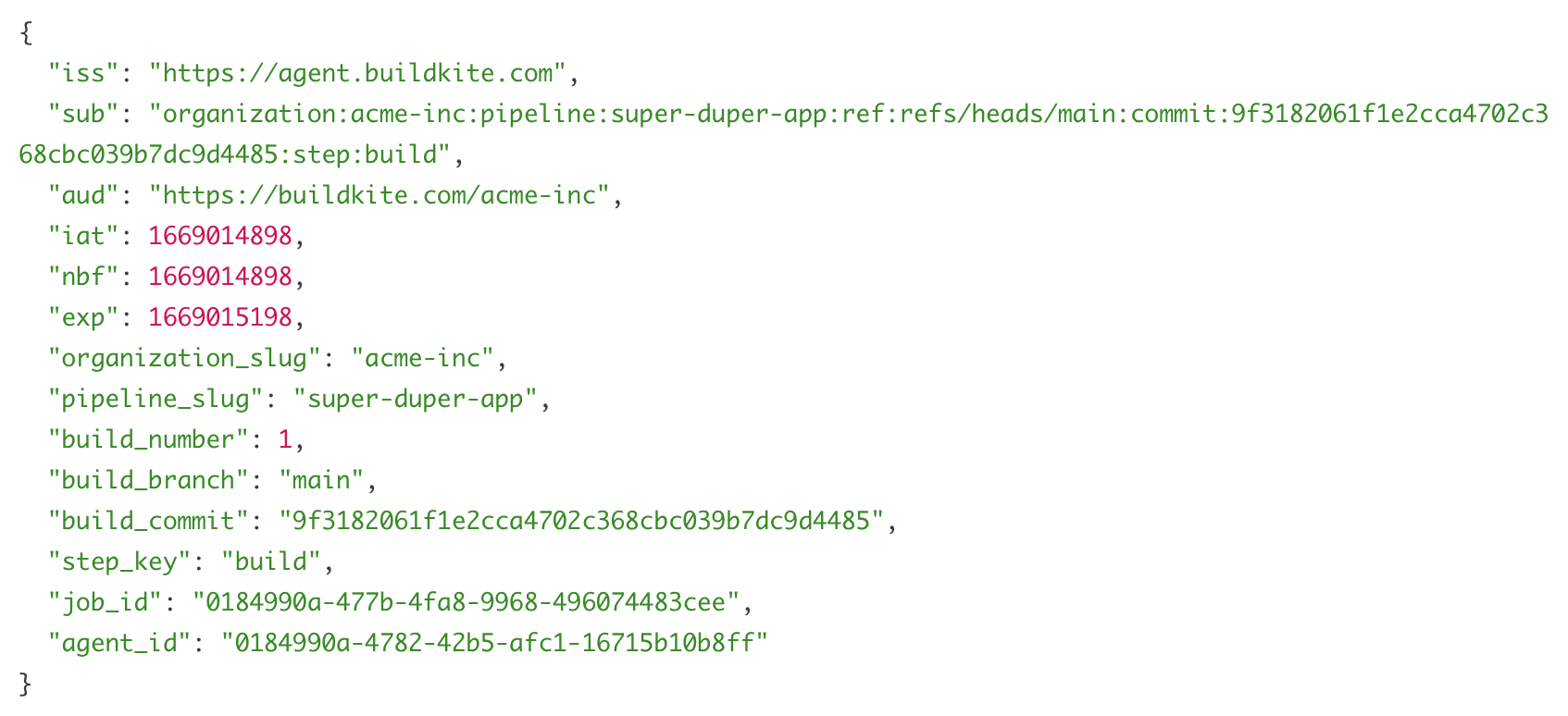
OIDC tokens are JWTs signed by Buildkite and decode into JSON which includes many attributes like the pipeline slug and the build branch. buildkite-agent oidc request-token will return a token representing the current job that can be exchanged with federated systems to authorize actions like deployments or allow access to context-sensitive information like secrets based on these attributes.
Learn more about OpenID Connect support from the Buildkite Agent
David
Export audit logs to EventBridge
Explore organization change events in your existing AWS monitoring suite.
Enterprise customers can now route Buildkite Audit Log events via the AWS Event Bridge event bus.
Himal
API access allowlist
Restrict API access to IP addresses and CIDR block ranges you trust.
You can now easily create and manage a list of IP addresses and CIDR blocks that are authorized to access your organization via the Buildkite API, improving security and reducing the risk of unauthorized access.
Learn more about configuring IP/CIDR allowlist via the UI, API, or Terraform
James
New environment variables for group steps
Jobs that belong to group steps will now have access to information about their group with three new environment variables:
BUILDKITE_GROUP_IDBUILDKITE_GROUP_KEYBUILDKITE_GROUP_LABEL
You could use these variables to upload steps to the same group, or alter the behaviour of jobs based on their group. These environment variables will be absent for jobs that do not belong to group steps.
David
Signal and signal reason in automatic retry rules
Jobs can now be automatically retried based on the signal received by the command process that caused it to exit, in addition to the job's exit code.
This is particularly useful in catching terminated agent hosts, such as you'd see when using EC2 Spot Instances:
1 2 3 4 5 6 7 8 9 10 11- label: "Tests" command: "tests.sh" retry: automatic: # Catch cleanly-terminated instances - limit: 2 signal_reason: "agent_stop" # Catch timed-out agents - limit: 2 exit_status: -1 signal_reason: none
David
Build Matrix support for plugins and agents
Build Matrix has been extended to support matrix variable interpolation inside the plugins and agents attributes of command steps.
1 2 3 4 5 6 7 8 9 10 11 12 13 14 15 16steps: - label: "💥 Matrix Build" command: "echo {{matrix.os}} {{matrix.arch}}" agents: queue: "builder-{{matrix.arch}}" matrix: setup: arch: - "amd64" - "arm64" os: - "windows" - "linux" plugins: - artifacts#v1.9.0: upload: "out/{{matrix.arch}}.gz"
David
Build waterfall view
The waterfall view visualizes the timeline of each step in a build. You can see this summary in your Builds page a toggle–enabling to switch between list and waterfall views.
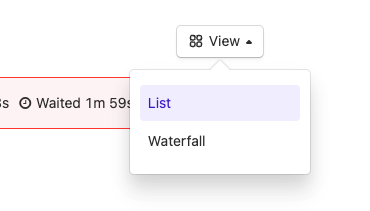
Oz
Go straight from failed jobs to Test Analytics
Quickly view insights about failed tests by going directly from a job to its related information in Test Analytics – providing a faster path from fail to fix.
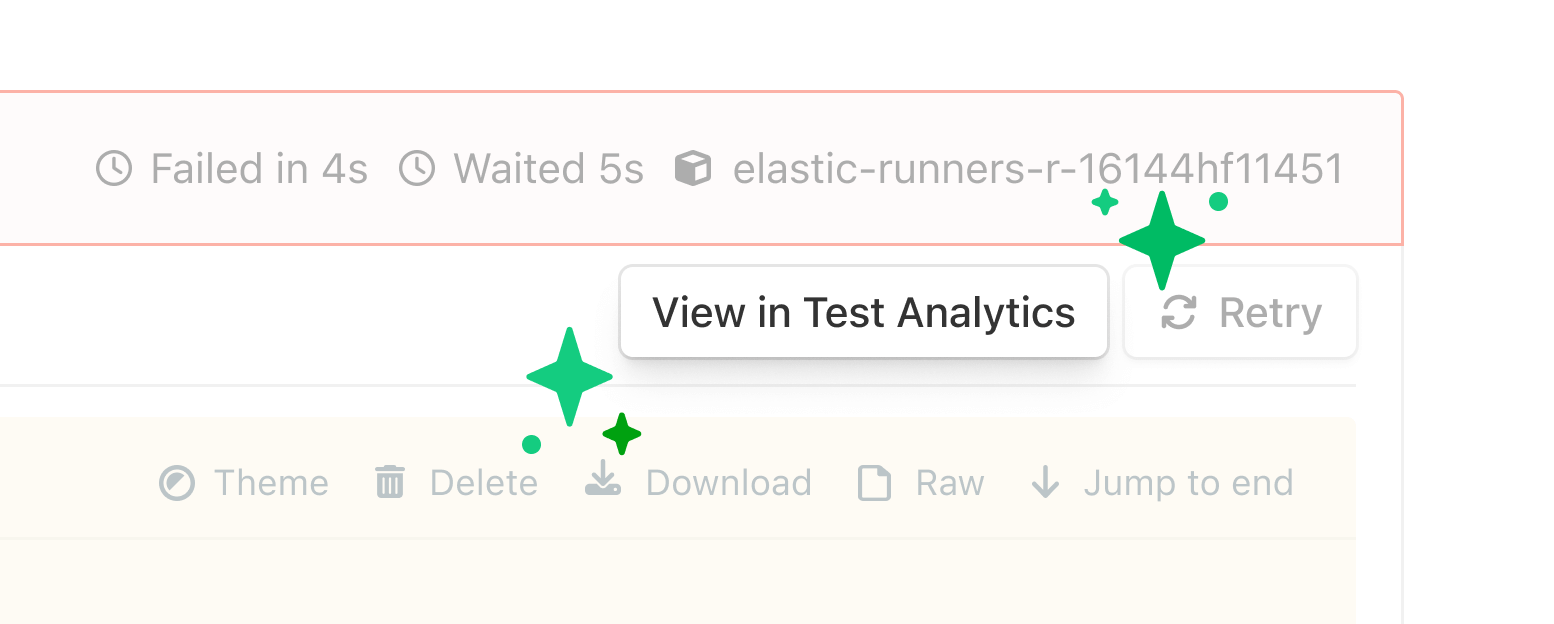
Michelle
Test Analytics now automatically detects flaky tests
Flaky tests are automated tests that produce inconsistent or unreliable results, despite being run on the same code and environment. They cause frustration, decrease confidence in testing, and waste time while you investigate whether the failure is due to a genuine bug.
Test Analytics finds your flakes by surfacing when the same test is run multiple times on the same commit SHA with different results. The tests might run multiple times within a single build or across different builds. Either way, they are detected as flaky if they report both passed and failed results.
Results are available in the Test Analytics UI and via a new REST API endpoint.
Learn more about flaky test tracker and its API
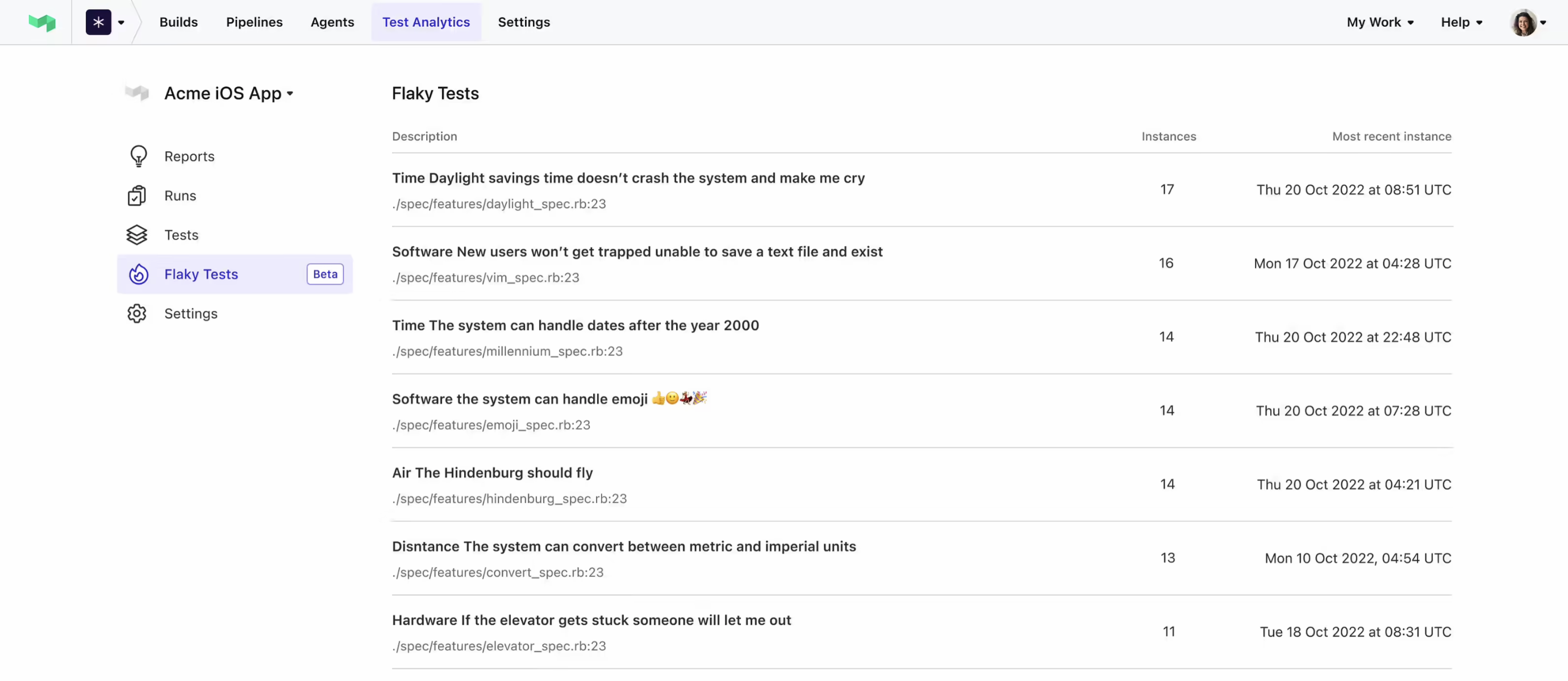
Michelle
Build UI improvements
We've updated the Build UI to be more intuitive with the following improvements:
- The
issuestab is called thefailurestab, making it easier for you to view failed jobs - The organization name and avatar are now seen on each Build page, to make it easier view the organization you're editing settings for
- Block steps within groups are now easier to identify in the UI with a thickened purple border
- Pipelines can be bookmarked instead of starred
- Build summary now has a rebuild option, rather than edit steps and new build options
- You can now navigate to all builds by clicking on the builds icon
- Spacing and font fixes
It's also easier to make your pipelines stand out with:
- Pipeline avatars in place of build stats
- Configuration of pipeline color and emoji through pipeline settings
Oz
Pipeline tags
Pipeline tags make it easier to sort through and filter multiple pipelines. Tag names support both text and emojis. You can now tag your pipelines and use the search bar to find tags.

Tags are unique per pipeline, don't contain line breaks and are capped at 64 characters. You can have 5 tags per pipeline.
Tags can also be set through REST and GraphQL APIs.
To set the tags, go to Pipeline Settings > General > Tags
Oz
Usage breakdown: understand your usage by pipeline and test suite
Analyze your usage by pipeline or test suite, with the option to view monthly or daily breakdowns. Delve into previous billing periods, and conveniently export your data for offline analysis.
Learn more about usage breakdown
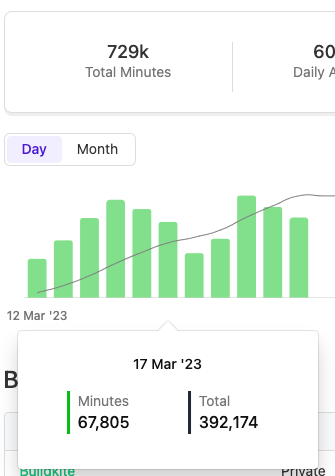
James
Start turning complexity into an advantage
Create an account to get started with a 30-day free trial. No credit card required.
